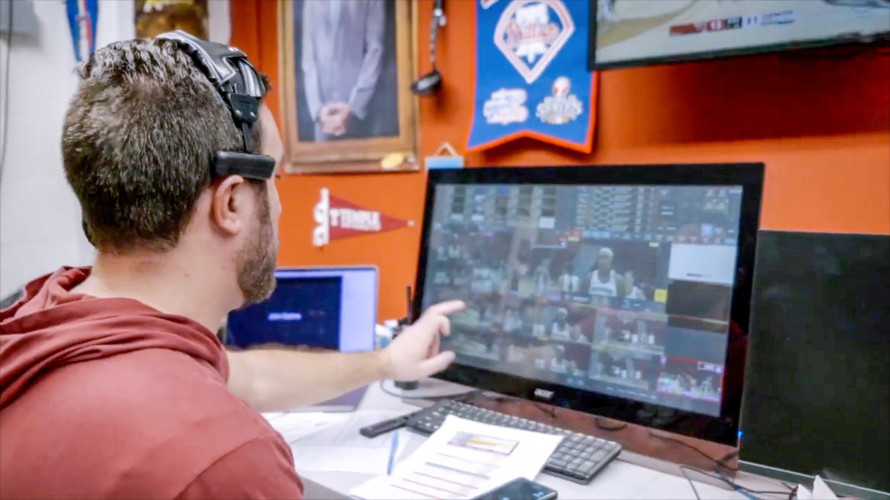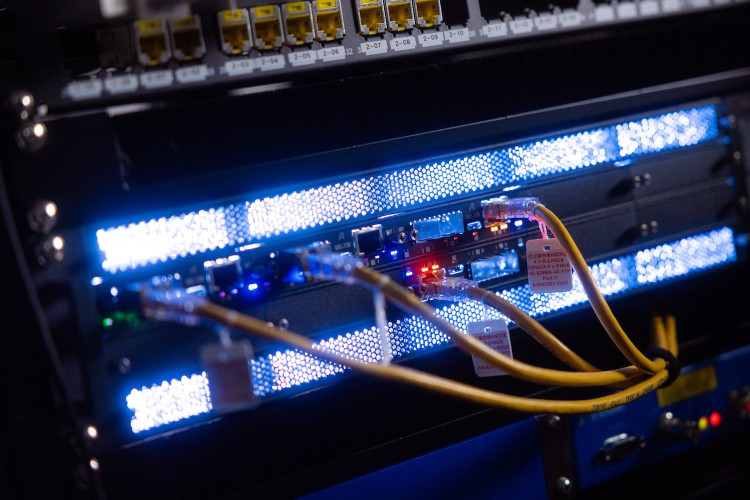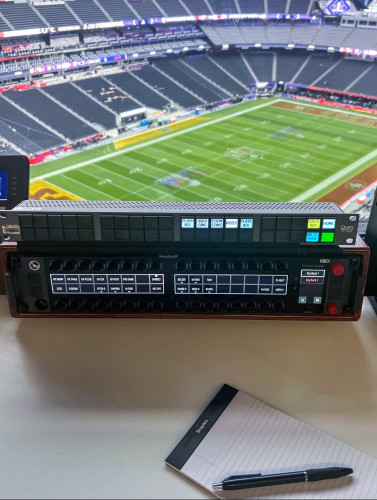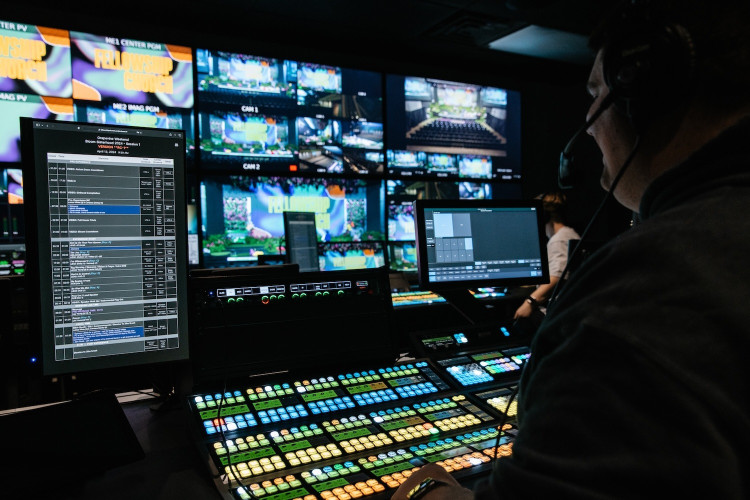Ask the Expert with Broadcast Service Centre
Author: Dennis Lennie
Published 1st May 2009
Ask the Expert with Broadcast Service Centre’s Dave Llewellyn
This month we visited independent service company, Broadcast Service Centre Ltd (BSC), specialising in providing top quality technical support for a wide range of equipment within the Broadcast and Pro video industry.
Dave Llewellyn has worked as a broadcast engineer for BSC (Broadcast Service Centre) at Aldermaston near Reading and has been in television related maintenance for over 45 years.
His introduction to broadcast product support and the high expectations of broadcast customers was with Link Electronic until 1986 when Dave moved to Sony as a VTR engineer. During this time he was also a technical author, writing and producing PC based technical training programs for engineers. His last ten years at Sony were as Principal Engineer with additional responsibilities as European VTR Specialist Engineer, interfacing between Sony country service organisations and the factory designers in Japan.
We put some frequently asked questions to one of their experts, Dave Llewellyn
What does it mean to be a Sony Authorised Service Centre?
Our engineers are trained by Sony in the products for which we hold authorisation (I was recently awarded Sony accreditation to provide support for the SRW-5800, the new advanced HD video recorder). We use Sony parts and operate to levels of service and quality agreed and approved by Sony. We have privileged access to technical information, jigs and tools that enable us to perform services that would otherwise be available only from Sony. Our engineers enjoy priority access to the Sony support network and provide feedback on product quality.
My broadcast VTR user’s guide tells me that I should have the unit serviced every 1000 hours. Is this really necessary in these days of high precision manufacturing?
Although the manufacturer’s recommendations for component replacement are often on the conservative side, wherever moving parts are used you are bound to suffer wear. By following the servicing guide you stand the best chance of avoiding failure during use, or of making “bad” recordings that could potentially require the whole cast and production team being called back to the studio/location for a re-shoot – very expensive (and difficult to explain to the client/boss).
Do you follow the manufacturer’s servicing guide?
With a completely new machine format we have little choice if we are to offer a price for the job “up-front”. Once we have seen the unit in real-world use for a while we are able to tailor our standard services and adjust (usually reduce) our prices accordingly. Most machines are developments of earlier models however, so we can use our knowledge of previous wear patterns to predict what is “safe” with new derivatives. We can always do a full manufacturer’s service if the customer requires it, but this is seldom requested these days.
Another very important aspect of our service is that due to our Sony Pro Assist status we have access to support bulletins detailing product modifications (i.e ones that could affect tape handling) and upgrades which can be performed whilst the equipment is being serviced / repaired
What is replaced during a service?
A minor service is usually performed somewhere between 750 and 3000 head-hour intervals depending on the machine. A PVW-2800 for instance has a video head life that may not reach 1000 hours for recording to full specification, but if used only for playback may well go on for longer before noise, frequency response and bearding become problematic. A DVW-500 digital only machine should easily reach 3000 hours before channel condition errors increase. Some digital only players will reach even higher figures before a head change is needed.
The pinch roller usually becomes polished at around 1000 hours and cleaning rollers become dirty at about the same time so lose their ability to remove tape deposits etc., rubber belts and tyres become soft and spongy causing slippage and intermittent problems so again, replacement may be necessary. All tape-touching surfaces will be cleaned with alcohol at this time to remove the build-up contaminants and dust etc and the whole machine will probably be cleaned with compressed air to ensure free movement of air thereby avoiding overheating.
What about other items?
At 3000+ tape running hours (as opposed to head hours) other items are likely to begin to show symptoms of wear. The drum motor bearings may become worn which may increase tape jitter and, on analogue machines, may also give rise to obscure low frequency audio problems. The tape lead around the lower drum becomes worn making it difficult for the heads to follow the recorded track in playback and writing out-of-specification track geometry in record (the typical tape interchange issue). The brush and sliprings at this stage are wearing through their contact surfaces causing various problems including DT issues, video noise and channel condition errors. The capstan motor bearings should last this far but will soon begin to wear and cause tape jitter problems and the shaft may start to form wear ridges that can affect tape handling. Reel motors on some machines seem to go on forever while others can throw-up various torque/tension problems beyond 3000 hours.
Tension arms, audio/CTL/timecode heads, threading motors/gearboxes, cassette mechanisms and cooling fans should all be checked as usage increases and replacement advised or implemented as necessary.
Can I do anything to minimise wear and extend the life of the components in the VTR?
Things that are detrimental to VTR heads and other components include: high or low temperature, high or low humidity, dust, cigarette smoke, static, beverages (it is not unusual to find in, and on, the VTR evidence of tea/coffee/wine/soda spillages). Anything that you can do to control the environment will be helpful and will be rewarded by lower servicing costs and /or better reliability.
What about cleaning tapes?
During use the video heads become scratched and collect tape and dust contaminants. This results in what is termed “spacing loss” and results in poor head-to-tape performance; the cleaning tape is mildly abrasive and is used to re-profile the heads and remove contaminants. Some tape manufacturers use a recording tape formulation that has a highly abrasive characteristic and this tends to minimise the requirement for a cleaning tape. Less abrasive tapes will require more regular use of the cleaning cassette, e.g Sony generally recommends using the cleaning tape about every 50 head hours. Some machines automatically recognise the cleaning tape, others have a special key press to initiate the cleaning but older machines must be timed and the tape ejected after the appropriate time (details are normally supplied with the tape).
Surely this will shorten the life of the heads?
On the contrary, if contaminants are allowed to build up a varnish-like film becomes established on the heads and this will result in premature head failure. When this condition is identified it is sometimes possible to recover with several applications of the cleaning tape but often it is too late for recovery. As an old adage goes – prevention is better than cure.
Can I wet-clean the heads?
A good cleaning regime will include both wet-cleaning and use of the cleaning tape. However, wet-cleaning should be undertaken only by experienced VTR engineers because there is a very high risk of terminal damage to the heads.
Can a chamois leather cloth be used to clean the heads?
A chamois leather used to be specified many years ago for VHS and U-Matic machines etc, but for modern machines a single fibre from this type of cloth could completely clog a head, or you might even damage a head with the coarse texture of the cloth. These days it is recommended that a fine weave lint-free cloth is used with ethyl alcohol. With very advanced machines such as the Sony SRW range it is also necessary to use a fresh cloth with each cleaning operation and to wear cotton gloves to avoid transferring biological contaminants from the hands.
Is there anything you can’t fix!?
At BSC we have the expertise and facilities to take boards to component level repair and can often obtain obsolete components from older machines sometimes being taken in as BER (beyond economical repair). We also carry an extensive library of service manuals, the later products thankfully are on disc making storage and retrieval a bit more straight forward!
I’ve seen you advertise second hand equipment as “better than new” – how is this?
BSC are well known for our service skills but lesser known is the fact that we do actually sell equipment including used kit. By implementing the latest factory modifications, firmware, software upgrades and component replacement where required together with our engineering knowledge we can supply used equipment that could be argued to be better than it was when originally manufacturered.
What is your most useful tool in the kit?
The most useful tool is what’s between our engineers ears – the knowledge and experience we’ve built up over the years is something money can’t buy.



































